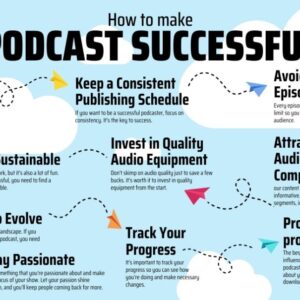
The Ultimate Guide to Financial Independence and Early Retirement (FIRE)
1: Introduction to FIRE
- What is the FIRE Movement?
- Why Financial Independence and Early Retirement Matter
2: The Pillars of the FIRE Movement
- Saving Aggressively
- Living Below Your Means
- Investing Wisely
3: How to Achieve Financial Independence
- Building Your Financial Foundation
- Understanding Your Financial Situation
- Creating a Financial Plan
- Cutting Expenses and Saving More
- Lifestyle Adjustments for Big Savings
- Identifying and Eliminating Wasteful Spending
- Increasing Your Income
- Side Hustles and Passive Income Streams
- Advancing in Your Career or Switching to a Higher Paying Job
4: Investing for Financial Independence
- The Role of Stock Market Investments
- How to Start Investing
- Low-Cost Index Funds and ETFs
- Real Estate Investment for FIRE
- Rental Properties and Real Estate Investment Trusts (REITs)
- Building Passive Income Streams with Real Estate
- Building a Diverse Investment Portfolio
- Diversification: Why It’s Crucial for FIRE
- Risk Management and Balancing Your Investments
5: The 4% Rule: How Much Do You Need to Retire Early?
- What is the 4% Rule?
- Calculating Your FIRE Number
- Realistic Expectations and Flexibility
6: How Long Does It Take to Achieve FIRE?
- Factors That Impact Your Timeline
- Is FIRE Possible in 10, 15, or 20 Years?
7: Challenges on the Path to FIRE
- Lifestyle Changes and Sacrifices
- Dealing with Setbacks and Emergencies
- Handling Social Pressure and Expectations
8: Overcoming Obstacles in the FIRE Journey
- Mindset Shifts to Embrace Minimalism
- Staying Motivated Throughout Your FIRE Journey
9: The FIRE Community
- Connecting with Like-Minded Individuals
- The Role of Online Communities and Resources
10: Common Misconceptions About FIRE
- Debunking the Myths of Early Retirement
- Why FIRE Isn’t Just for the Wealthy
11: Conclusion: Is FIRE Right for You?
- Recap of the Benefits of FIRE
- Understanding the Trade-Offs and Considerations
- Is FIRE a Sustainable Goal for Everyone?
12: FAQs
- What is the FIRE movement?
- How much money do you need to retire early?
- What are the key strategies to achieve FIRE?
- Can anyone achieve FIRE, or is it only for the wealthy?
- What are the most common challenges faced on the FIRE path?
The Ultimate Guide to Financial Independence and Early Retirement (FIRE)
Introduction to FIRE
The FIRE movement, which stands for Financial Independence, Retire Early, has become a popular financial trend for individuals looking to take control of their financial future. The concept behind FIRE is simple: by aggressively saving, investing wisely, and living below your means, you can achieve financial independence much earlier than the typical retirement age of 65. This guide will walk you through the pillars of FIRE, how to achieve it, and the challenges you might face along the way.
But first, let’s break down what FIRE truly means and why so many people are chasing this dream.
READ MORE: The Ultimate Guide to FIRE – How to Retire Early
What is the FIRE Movement?
The FIRE movement isn’t just about quitting your 9-5 job at a young age — it’s about creating a lifestyle where your income from investments and passive income streams can cover your living expenses without needing to work full-time.
The movement encourages you to save and invest aggressively in your early years, aiming for financial freedom in your 30s or 40s instead of waiting until you’re much older.
Why Financial Independence and Early Retirement Matter
Financial independence allows you to escape the “rat race” and live life on your own terms. You can choose to work because you want to, not because you have to. Early retirement means having the option to spend your time doing what you love, whether that’s traveling, pursuing hobbies, or simply relaxing with family and friends.
The Pillars of the FIRE Movement
To achieve FIRE, there are three core pillars you must focus on:
Saving Aggressively
The first step toward FIRE is saving a significant portion of your income. While most people save about 10-20%, FIRE proponents recommend saving at least 50-70% of your income, depending on your lifestyle and goals. The more you save, the quicker you’ll reach financial independence.
Living Below Your Means
Living below your means is essential for FIRE. It means cutting back on non-essential spending and being mindful of how much you consume. For many, it involves downsizing homes, minimizing expenses, and learning how to live a more minimalist lifestyle.
Investing Wisely
Once you’ve saved aggressively, it’s time to invest that money in vehicles that will grow over time. Investing wisely in stocks, bonds, and real estate can significantly accelerate your journey to FIRE.
How to Achieve Financial Independence
Achieving financial independence involves a combination of cutting expenses, increasing income, and investing smartly. Let’s break down how you can work on each of these areas.
Building Your Financial Foundation
Before you can even think about reaching FIRE, it’s crucial to get a solid understanding of where you stand financially.
- Understanding Your Financial Situation: Take stock of your income, expenses, debts, and assets. This will give you a clear picture of where you can improve.
- Creating a Financial Plan: Set specific, measurable financial goals. Identify how much you need to save each month and what your timeline looks like.
Cutting Expenses and Saving More
Once you have your foundation, focus on cutting expenses wherever possible. You don’t have to live like a hermit, but here are a few lifestyle adjustments that can significantly reduce your monthly bills:
- Downsize Your Housing: One of the biggest expenses is your home. Moving to a smaller place or a less expensive area can free up a lot of cash for investing.
- Reduce Unnecessary Subscriptions: Review your subscriptions to streaming services, gym memberships, or any other recurring costs that don’t add value to your life.
Increasing Your Income
Alongside saving more, increasing your income is essential for reaching FIRE faster.
- Side Hustles and Passive Income Streams: Start a side business or look into passive income sources such as rental income, dividends, or affiliate marketing.
- Advancing in Your Career or Switching to a Higher Paying Job: While it’s great to save, you can’t overlook the importance of earning more. Look for opportunities to advance in your career or consider switching jobs for a better salary.
Investing for Financial Independence
Investing is the cornerstone of achieving FIRE. You can’t just save your way to financial independence — you need your money to grow. Here’s how to make your money work for you.
The Role of Stock Market Investments
The stock market is one of the best places to grow wealth over time. You don’t need to be a stock-picking genius to succeed. Consider low-cost index funds or ETFs, which spread your investment across a wide range of companies and minimize your risk.
Real Estate Investment for FIRE
Real estate is another key investment vehicle for FIRE. Whether it’s buying rental properties or investing in Real Estate Investment Trusts (REITs), real estate can provide a steady income stream and long-term appreciation.
Building a Diverse Investment Portfolio
Diversification is essential for managing risk. Spread your investments across different asset classes, such as stocks, bonds, and real estate. This way, if one investment type performs poorly, others can cushion the blow.
The 4% Rule: How Much Do You Need to Retire Early?
The 4% Rule is a popular guideline used to determine how much you need to save for retirement. The idea is that, by withdrawing 4% of your portfolio each year, your savings will last throughout retirement.
What is the 4% Rule?
The 4% Rule suggests that if you have enough money saved to withdraw 4% annually, your savings will last indefinitely without running out. For example, if you need $40,000 per year to live, you’d need $1 million saved up.
Calculating Your FIRE Number
Your FIRE number is the amount of money you need to retire comfortably. To calculate it, multiply your desired annual expenses by 25. This gives you the amount of money you’ll need to save before you can retire early.
Realistic Expectations and Flexibility
While the 4% rule is a great guideline, keep in mind that it’s not set in stone. Factors such as inflation, market performance, and unforeseen expenses can impact your ability to follow the 4% rule strictly.
READ MORE: Understanding the Importance of Financial Literacy: How to Improve Your Money Skills
How Long Does It Take to Achieve FIRE?
The timeline to FIRE varies greatly depending on your income, expenses, and how aggressively you save. For some, it may take 10 years, while others might need 20 or more.
Factors That Impact Your Timeline
- Income Level: The more you earn, the faster you can reach FIRE.
- Expenses: Cutting expenses as much as possible will accelerate your journey.
- Investment Returns: The higher your returns on investments, the sooner you’ll reach your goal.
Challenges on the Path to FIRE
The journey to financial independence isn’t without challenges. Some common hurdles include:
- Lifestyle Changes and Sacrifices: Living below your means may require significant sacrifices, like giving up luxuries or simplifying your life.
- Dealing with Setbacks and Emergencies: Unexpected expenses or market downturns can disrupt your FIRE timeline.
- Handling Social Pressure and Expectations: Choosing a lifestyle of minimalism may be difficult in a world where consumerism is the norm.
Overcoming Obstacles in the FIRE Journey
Success on the FIRE path requires mindset shifts and overcoming obstacles along the way.
Mindset Shifts to Embrace Minimalism
One of the hardest parts of FIRE is learning to embrace a minimalist lifestyle. It’s about valuing time over material possessions, which may feel counter to societal pressures.
Staying Motivated Throughout Your FIRE Journey
Motivation can wane over time, especially when setbacks occur. Set short-term goals and reward yourself for reaching milestones to stay on track.
The FIRE Community
The FIRE movement has grown significantly over the past decade, and online communities play a big role in supporting individuals on their FIRE journey.
Connecting with Like-Minded Individuals
Connecting with others who share your FIRE goals can provide support, encouragement, and advice.
The Role of Online Communities and Resources
There are numerous online blogs, forums, and social media groups where you can find valuable resources and connect with people who are also on the path to financial independence.
Common Misconceptions About FIRE
There are many misconceptions about FIRE, such as it’s only for wealthy individuals or that you must live a life of extreme austerity.
Debunking the Myths of Early Retirement
FIRE is achievable for most people, regardless of income level. It’s more about discipline and smart financial decisions than having a large starting salary.
Why FIRE Isn’t Just for the Wealthy
FIRE can be achieved through modest salaries and smart saving and investing strategies. It’s about prioritizing financial independence over consumer spending.
Conclusion: Is FIRE Right for You?
In conclusion, the FIRE movement offers a path to financial freedom and early retirement. However, it’s not for everyone. Achieving FIRE requires sacrifice, discipline, and long-term planning. If you’re willing to make the necessary adjustments to your lifestyle and finances, the rewards of FIRE are immense.
READ MORE: How To Manage Financial Risk In Your Investment Portfolio
FAQs
- What is the FIRE movement?
The FIRE movement stands for Financial Independence, Retire Early. It focuses on aggressively saving and investing to achieve financial independence at a young age. - How much money do you need to retire early?
The amount you need to retire early depends on your desired lifestyle, but using the 4% rule, you can estimate that you need 25 times your annual expenses saved up. - What are the key strategies to achieve FIRE?
The key strategies include saving aggressively, living below your means, and investing wisely in diversified assets such as stocks and real estate. - Can anyone achieve FIRE, or is it only for the wealthy?
Anyone can achieve FIRE with the right strategies, regardless of income level. It requires discipline, smart financial decisions, and a focus on long-term goals. - What are the most common challenges faced on the FIRE path?
Common challenges include making lifestyle changes, dealing with setbacks, and managing social pressure. However, with perseverance and proper planning, these challenges can be overcome.









This Post Has One Comment